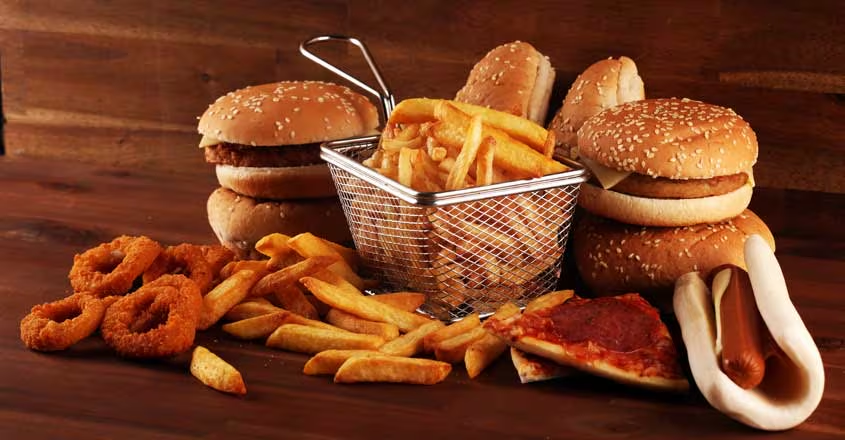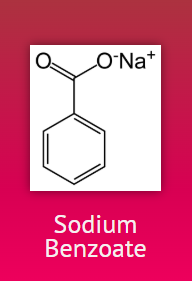The "Not" Food

What not to eat!
Dr. Steven Gundry reminds us that eliminating inflammatory and toxic substances from our diet likely has the greatest impact on our health. The most challenging part is changing the normal thinking patterns that we’ve had for years, if not decades. What we consider food is not actually food. This concept definitely stretches the brain and is difficult to believe at first. Consider this: You are reading this because of your current health and body. Everything you normally eat has gotten you to this point. The only way to change this is to change how you think about and eat food.
Unfortunately, much of what is sold as “food” in our stores is not human food. As Dr. Robert Lustig reminds us, food is defined as “a substance that contributes to the growth or fuel of an organism.” Heavily processed, preserved, and artificially colored substances are legally edible but not food. Sugar is not food. Anything with preservatives is not food. Preserving a perishable item means inhibiting bacteria. This also inhibits the bacteria in our gut required to process the substance. A good rule of thumb is to avoid anything with an ingredient label containing words you don’t understand, such as sodium benzoate.

"Vegetable" (Seed Oils)
Most oils labeled as “vegetable oil” and used in restaurants and homes are seed oils. These oils are all industrial products, and none are safe for human consumption. Examples of seed oils to avoid include soy, corn, sunflower, safflower, cottonseed, and canola (rapeseed). These oils are inflammatory and loaded with omega-6 fatty acids, also known as polyunsaturated fatty acids (PUFAs). In the next sections, we’ll discuss the good oils, such as olive oil. Please read all labels carefully, as these oils are added to almost all packaged foods. These oils directly contribute to insulin resistance, weight gain, diabetes, and metabolic dependence on sugar. It takes years for your body to detoxify these oils, even after you stop eating them. However, you will notice health improvements in as little as three days to three weeks after you stop consuming them. If you take only one lesson from Dr. Dan’s food plans, heed this: Stop eating all seed oils. If you’re out and about and want to know if a restaurant uses seed oils, check out Seed Oil Scout.
Lectins
Then there are lectins, which are molecules that cause inflammation and are a major source of “leaky gut.” Plants use these molecules as a defense system to prevent being eaten. That’s right—plants generally don’t want to be eaten. They can’t bite or run away, but they can make us feel sick. Eat a raw potato, and you’ll understand. Many common foods fall into the high-lectin category, such as legumes like peanuts. Dr. Steven Gundry emphasizes the importance of reducing and avoiding lectins. Many lectins can be deactivated by cooking or fermenting, which is why a pressure cooker is helpful. However, many lectins, such as those in wheat, oats, and rye, cannot be removed by any method. Dr. Dan, does that mean bread and everything made with wheat, oats, and rye is not human food? Yes, that’s a story for another time. The food I emphasize in Dr. Dan’s Food is generally low-lectin food, which makes it human nutrition!
Sugar
There’s no way around it: Sugar is not a food. If sugar were invented today, it would likely be a prescription drug regulated by the FDA. Sugar signals our body to gain weight while making it impossible to lose weight. It is highly addictive, similar to alcohol. It metabolizes into the same liver-toxic chemical as alcohol. That’s right: Fructose (the sugar in fruit, half of table sugar, and the majority of HFCS [high-fructose corn syrup]) and alcohol are processed the same way in the human liver. We’ve been told to eat five servings of fruit per day. Imagine if we were told to drink five glasses of bourbon per day! Well, it’s the same thing. They are equally toxic. That big bowl of fruit, touted as healthy and recommended for breakfast, is essentially a bowl of diabetes. Fructose directly causes metabolic syndrome, elevated blood pressure, insulin resistance, and elevated triglycerides. There is a safe way to eat fruit, which I’ll detail elsewhere. The message here is that all sweet additives—natural, artificial, and even honey—contribute to insulin resistance and metabolic syndrome. They are mitochondrial toxins. Sweets in liquid form—that is, all sodas, energy drinks, and even natural fruit juices—are the worst. No food program can help you if you continue to consume large amounts of sugar and artificial sweeteners! Fructose makes us fat and keeps us fat.
The good news is that when you stop eating sweets, your brain will recalibrate and no longer crave them. Eating sweets creates the desire to eat sweets, while not eating sweets decreases the desire. You won’t miss sweets after you stop, but you may experience withdrawal symptoms for a couple of weeks. Sweet foods are highly addictive.
Alcohol
Okay, the third bomb is alcohol. We used to think there was some redeeming value in having “a few” drinks. In fact, there was a major study that claimed mild-to-moderate drinkers were healthier than nondrinkers. However, the data are in, and there is no redeeming value to alcohol whatsoever. Alcohol is a depressant. It converts into a chemical that is toxic to the liver—the same chemical found in fructose sugar—and enhances weight gain and the desire for more food. Alcohol is not food. It does not make people feel good after temporary disinhibition. It contributes to violence and highway destruction. It does not promote sleep; it actually disrupts beneficial sleep. Some colored varieties of distilled spirits, like bourbon, and red wines contain polyphenols, but the benefits are likely outweighed by the harm from the alcohol. Any regular alcohol intake will sabotage your progress. Beer is the absolute worst because it contains three components that cause weight gain: alcohol, sugar, and yeast umami.
HRV
Alcohol and heart rate variability (HRV). There is good and growing evidence that HRV is an indicator of cardiac health. A higher HRV is associated with better health. However, there is evidence that alcohol decreases HRV by the same amount as the number of drinks consumed. This effect may last for days. The well-known negative impact on sleep quality is reason enough to avoid alcohol, and now we can add cardiovascular risks to the list. Unfortunately, alcohol is a natural product, like uneaten fruit that rots. Just because something is natural does not make it safe.
Soy
Soy is an “anti-nutrient.” This means that it blocks the digestion of certain proteins and prevents the absorption of critical minerals, especially zinc. It’s definitely not a food. Almost all soy in the USA is genetically modified and is often highly processed for use as an additive in many items. Even worse are the phytoestrogens that disrupt your natural hormone balance. However, fermented soy products are different. If you find organic fermented soy products, such as natto and miso, then they are nutritious foods. Soy sauce is fermented, but it often contains added sugar and is made with wheat. Pure fermented soy is available as tamari.
Milk
Milk is designed to help baby animals grow quickly. Why would we, as adults, ever want to grow? Milk contains insulin-like growth hormones, estrogen, sugar, fat, and the inflammatory protein A1 beta-casein. Cow’s milk promotes obesity. Of course, it tastes good because sugar and fat are delicious. The amount of estrogen in cow’s milk is staggering, which is another reason not to consume it. It’s not good for children, either, unlike goat milk, which is much closer to human mother’s milk. Most cow’s milk in the USA, China, and much of Europe contains A1 casein protein. This protein is inflammatory and has been associated with worsened gut function, brain fog, type 1 diabetes, heart disease, and other ailments. We are A2 casein animals. Other animals in the A2 casein club include goats, sheep, buffalo, bison, and venison. There are A2 cows and A2 cow products available. As long as you choose A2 casein products, fermented milks are different. Examples of good fermented A2 dairy include sheep, goat, and buffalo cheeses, yogurts, and kefir. If you insist on using milk in your coffee, for example, goat milk or A2/A2 organic cream are likely the best options. More on coffee later.
But Dr. Dan what about vitamin D and calcium in milk? Isn’t that a good reason to drink it?
No, it’s not. The vitamin D in milk is fortified to around 150 units per 8-ounce glass. The recommended daily amount of vitamin D is closer to 10,000 units. You would have to drink about four gallons of milk a day to get that much vitamin D! The calcium in cow’s milk is not digestible by humans and actually causes the body to lose calcium. A typical diet is high in calcium, which causes an imbalance with magnesium. The ideal calcium-to-magnesium ratio is about one to one.
Addendum for science geeks like me: In his book Nature Wants Us to Be Fat, Richard Johnson, M.D., describes how fructose directly turns on a survival switch that tricks the body into thinking it is starving. This increases fat storage and slows metabolism. He also describes endogenous fructose, which the body creates when glucose levels are high. Regardless of the source, external or internal, fructose has the same function: it makes us fat. The internal mechanism is likely via an intermediary called sorbitol, so glucose turns into sorbitol, which then turns into fructose in a process called the polyol pathway. So why does most commercial toothpaste contain sorbitol? Alcohol is processed via the polyol pathway to sorbitol and then to fructose, which explains how alcohol and fructose can cause similar liver damage.
“Vegetable” oils, which are industrial-processed seed oils, contain large amounts of polyunsaturated fatty acids (PUFAs). In her book Dark Calories, Dr. Shanahan describes how these PUFAs are not easily metabolized by the body and force it to use sugar.
